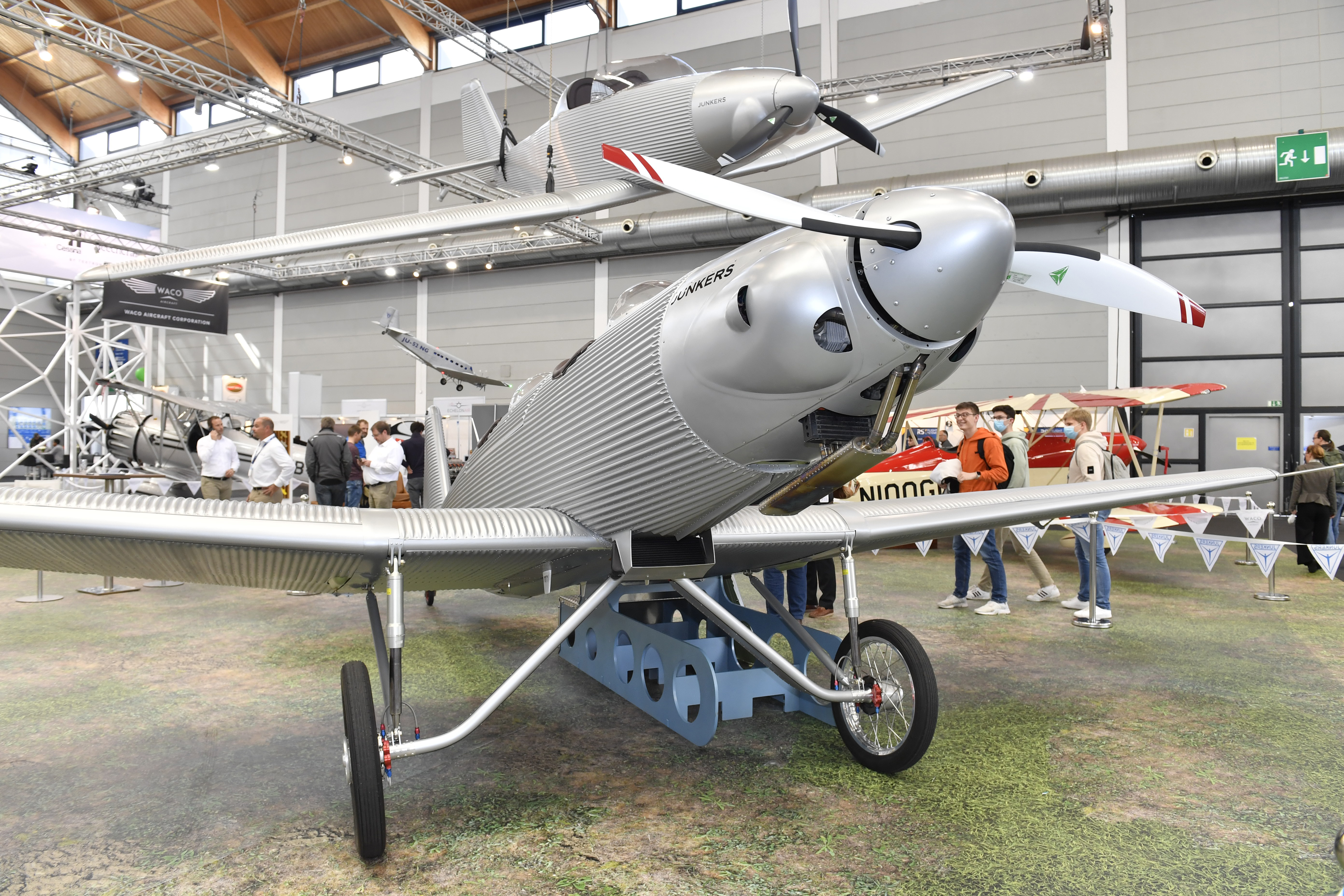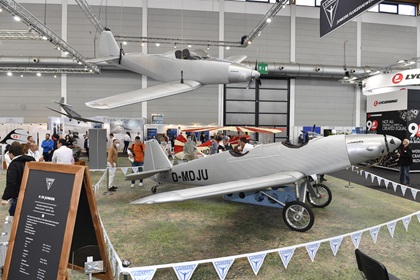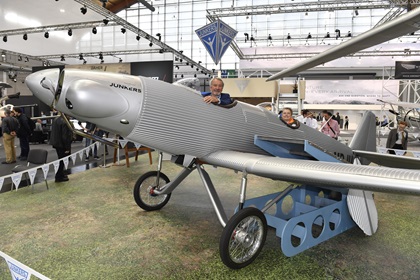Rebooting a classic
The Junkers A50 Junior comes full circle
Nobody knew it then, but 2019 was to mark a hiatus. The pandemic closed Aero Friedrichshafen, the German aircraft convention, and many other events worldwide for two consecutive years. When Aero finally opened its doors to exhibitors and spectators alike this year, the big question was—what happened in the meantime?

In 2019, I enthusiastically reported on the Junkers F 13, in my mind one of the most beautiful aircraft ever. I wanted to know where it was now.
“It’s sitting right there, and the modern jets and pistons parade right past her, the mother of all airplanes,” chuckled Bernd Junkers, grandson of founder Hugo Junkers, when I met him at the booth. He is not involved in the current company.
Turns out, Junkers Flugzeugwerke AG used the two-year break well. On the exhibit floor stands the A50 Junior, a European “ultralight” in tandem configuration. The design is based on the original, the first all-metal sport aircraft from 1929. It was designed as an “aircraft for the people”—affordable and easy to fly. Alas, the depression put those plans on hold. However, the aircraft was famously piloted by Marga von Etzdorf, the first woman to fly for an airline (DHL, later Lufthansa). In 1931, she took the A50 on a record-breaking flight from Berlin to Tokyo.
 The A50 Junior on the exhibit floor is a contemporary prototype with an updated airframe, and modern avionics and interior, as well as a ballistic recovery parachute. Initially, 29 will be manufactured (to honor the year the original was released) and the majority of the order book has already sold out. At 197,000 euros (value added tax included) it’s in the price range of comparable aircraft, but there’s something those don’t have. It’s the “wow factor.”
The A50 Junior on the exhibit floor is a contemporary prototype with an updated airframe, and modern avionics and interior, as well as a ballistic recovery parachute. Initially, 29 will be manufactured (to honor the year the original was released) and the majority of the order book has already sold out. At 197,000 euros (value added tax included) it’s in the price range of comparable aircraft, but there’s something those don’t have. It’s the “wow factor.”
This taildragger is decidedly retro with its corrugated metal airframe, open cockpit, and spoked, bicycle-style landing gear. True to modern times, future owners can spec out their aircraft. There are six colors to choose from for the exterior paint job, and six colors for the interior leathers, as well as choices for some exterior details like the cockpit coaming.
 Dieter Morszeck, owner of Junkers Flugzeugwerke AG, explained that this aircraft should attract pilots who have fun flying a very particular, beautiful aircraft with a lot of history. Which is exactly what the original designer, Hugo Junkers, had in mind when he created this flying machine. While this author’s favorite Junkers is still the F 13, the A50 is a close second.
Dieter Morszeck, owner of Junkers Flugzeugwerke AG, explained that this aircraft should attract pilots who have fun flying a very particular, beautiful aircraft with a lot of history. Which is exactly what the original designer, Hugo Junkers, had in mind when he created this flying machine. While this author’s favorite Junkers is still the F 13, the A50 is a close second.


